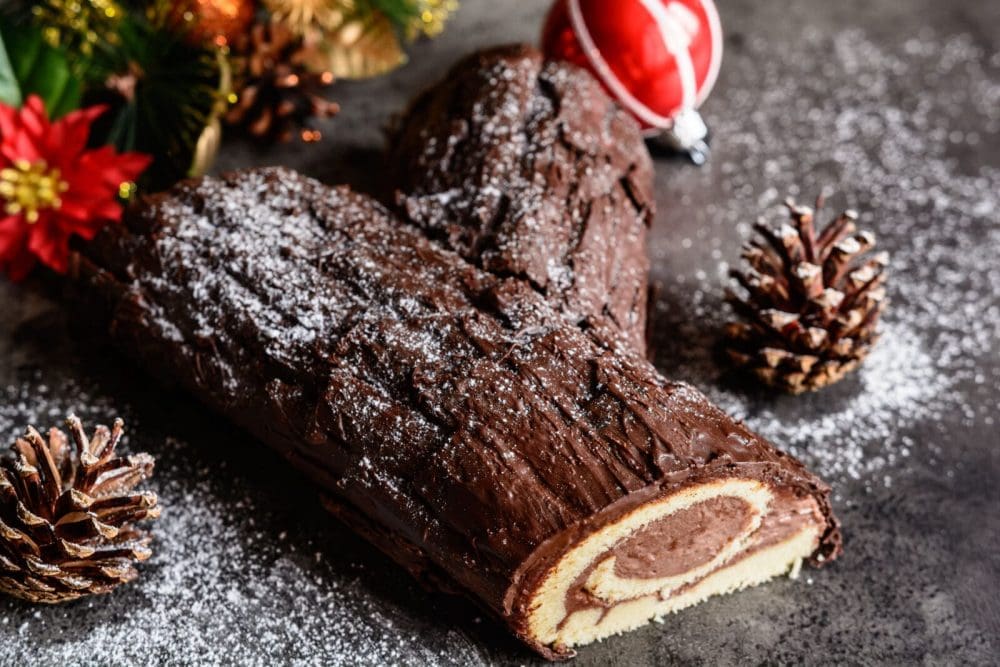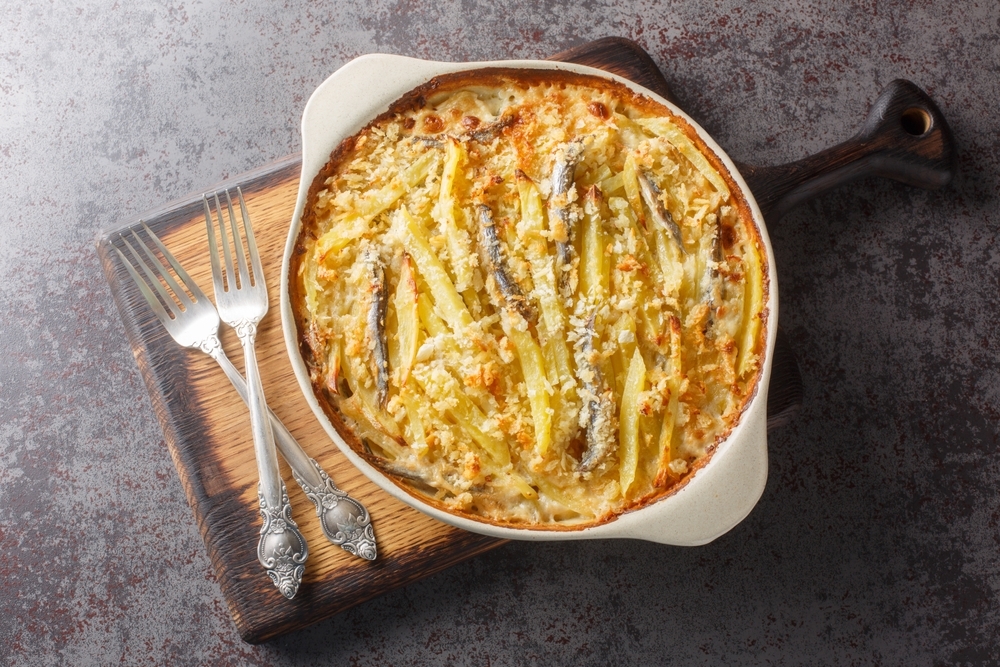It doesn’t matter where you are in the world—food is a highlight of any holiday celebration. It is the glue that brings loved ones together to share stories, culture, and rich flavors.
Depending on where you live, you will consider some foods a delicacy, while other dishes may leave you scratching your head.
The bottom line is the Christmas holiday is celebrated globally. However, each culture has its own unique take. Let’s take a look:
Bûche De Noël (France)

Bûche de noël
Bûche de noël is a sweet French classic typically served during the Christmas season.
This festive, traditional desert is decorated to resemble a “yule” log. It commemorates an ancient, Pagan Christmas tradition of cutting and burning a special log to ensure that the new year would bring a successful harvest.
A bûche de noël cake is typically composed of a light and airy chocolate sponge cake rolled with chocolate whipped cream and topped with chocolate ganache—a chocolate lover’s dream.
Mince Pie (Britain)
View this post on Instagram
Also known as mincemeat or Christmas pie, mince pie is a widely popular dish that originated in Great Britain.
This British delicacy dates back to the kings and queens of the Middle Ages and was known as a status symbol, given the expensive price tag of meat and fruit. This somewhat bizarre ingredient combo was actually used as a meat preservation technique.
Although once a savory pie, most modern mince pies are meatless. The traditional recipe consisted of minced meat, suet (beef fat), dried fruit, spices, and distilled spirits. Nowadays, mince pies have become more fruit-forward, containing generally the same ingredients without the meat bits.
Shuba (Russia)

Shuba or “herring under a fur coat”
Shuba, otherwise known as “herring under a fur coat,” is exactly how it sounds.
This well-known holiday staple traditionally consisted of three layers: chopped pickled herring, grated potatoes, and beets. Other variations may include grated carrots or eggs between the layers, depending on your personal preference
This dish originated during times of economic strife, as the three main ingredients were plentiful and readily available. Now, this dish is celebrated for its complex flavor combination and visually appealing look.
Latkes (Israel, Europe, US)
View this post on Instagram
Latkes are a popular staple in Jewish cuisine, typically enjoyed during Hanukkah.
These potato fritters are simply fried in hot oil and served with complementary applesauce or sour cream and chives.
There are lots of ways to have fun and modernize a latke recipe, however, it must be cooked in oil. The oil symbolizes the eternal flame in the ancient Jerusalem temple that burned for eight days, even though there was only enough oil for it to burn one day.
It also helps that this holy food is equally comforting and delicious.
Pasteles (Puerto Rico & Caribbean)
View this post on Instagram
Pasteles are an integral Christmas treat served in Puerto Rico and several other Caribbean and Latin-American countries.
The traditional Puerto Rican pasteles are typically composed of pork and adobo stuffing, encased in a green plantain masa, wrapped in banana leaves, and then boiled.
Pasteles hold an important place at the Christmas table because the process that goes into making them is labor intensive—a labor of love, if you will.
Jansson’s Temptation (Sweden)

Jansson’s Temptation
Jansson’s Temptation is a traditional Swedish casserole, which remains a popular item for a Swedish “julebord” or Christmas feast.
This rich dish is made of potatoes, onions, pickled sprats (fish similar to anchovies), bread crumbs, and cream.
The salty component of the dish may seem off-putting, however, a true Swede would tell you to give it a try.
Bánh chưng (Vietnam)
View this post on Instagram
Bánh chưng is a classic Vietnamese dish enjoyed during the Tết holiday or Lunar New Year.
These savory sticky rice cakes are wrapped in banana leaves and filled with umami-flavored mung beans and fatty pork belly.
Legend has it, Lang Lieu, the 6th Prince of the Hung Dynasty, became the successor thanks to his creation of Bánh chưng. I guess the people must have really liked it.
Pan de Jamón
View this post on Instagram
Pan de Jamón is a traditional Venezuelan savory Christmas bread that is rolled and stuffed with ham, raisins, and green olives.
This bread is thought to have originated in Caracas, Venezuela at Gustavo Ramero’s Bakery in 1905, when Gustavo was looking for a way to use leftovers and accidently created the beloved dish that has become a staple in Venezuelan culture.
The subtly sweet dough encases a complexly flavored filling in this Christmas favorite, ultimately paying homage to Venezuela’s rich history and culture.
Eggnog (USA)
View this post on Instagram
This one is no secret, as most households have this creamy, eggy, (sometimes boozy) mixture ready to go for the holiday season.
Be a crowd-pleaser and whip up a large batch of this stuff, it won’t disappoint.
